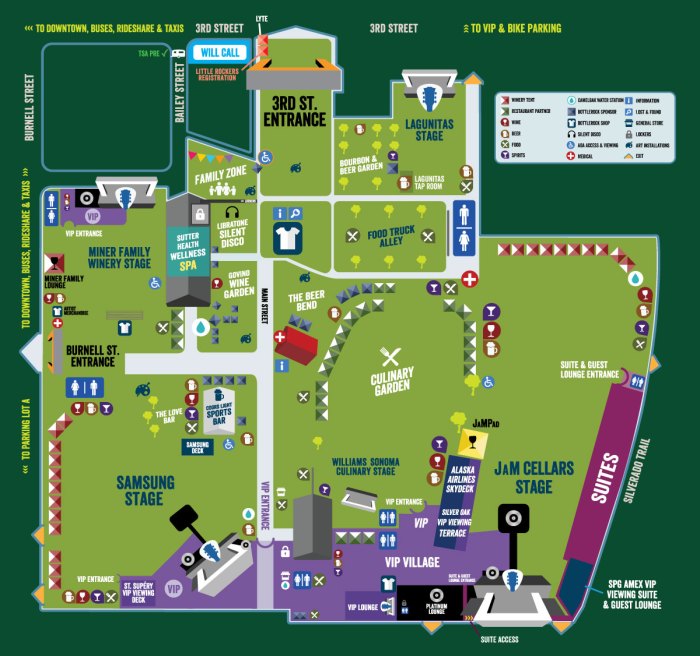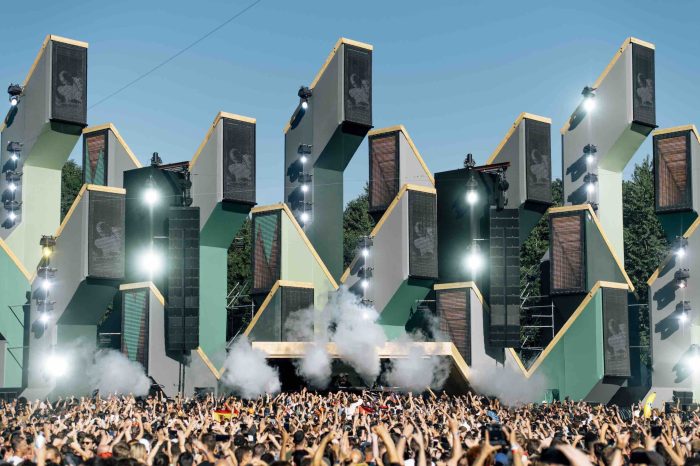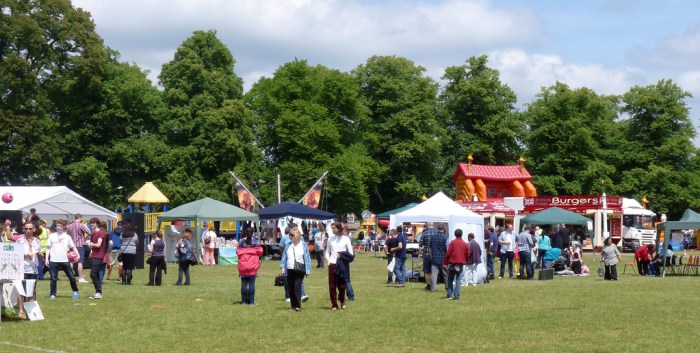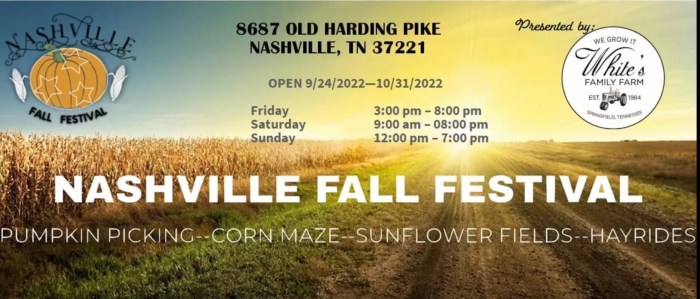Awkenings Festival Map: Navigating the sprawling landscape of this legendary electronic music festival requires more than just a good pair of dancing shoes. This comprehensive guide unravels the secrets to unlocking the ultimate Awakenings experience, from deciphering the map’s intricate layout to discovering hidden gems and ensuring a safe and unforgettable journey. We’ll delve into everything from stage locations and amenities to transportation options and crucial safety information, ensuring you’re fully prepared to conquer the festival grounds.
Imagine yourself effortlessly moving through the vibrant crowds, knowing exactly where to find your favorite DJs, grabbing a bite to eat, or quickly accessing essential services. This isn’t just a map; it’s your key to maximizing your time and energy at Awakenings, allowing you to focus on what truly matters: the music and the electrifying atmosphere.
Map Functionality and Design

A well-designed festival map is crucial for a positive attendee experience. It acts as a silent guide, helping navigate the often-complex layout of a large-scale event. A poorly designed map, however, can lead to frustration, lost time, and ultimately, a diminished festival experience. This section details the key elements of effective festival map design and functionality.Effective festival map design prioritizes clarity, ease of navigation, and the inclusion of all necessary information.
A user-friendly map should be intuitive, requiring minimal effort from attendees to locate specific areas or attractions. The visual design should be appealing and easy on the eyes, avoiding clutter and overwhelming detail. Successful maps strike a balance between providing sufficient information and maintaining a clean, readable format.
User-Friendly Map Layout
A user-friendly map layout employs several key strategies to enhance usability. Firstly, it uses a clear and consistent scale, allowing attendees to accurately gauge distances between locations. Secondly, it uses a logical organizational structure, grouping similar elements together (e.g., stages, food vendors, restrooms). Thirdly, it employs a color-coded system for different areas or types of attractions, improving visual comprehension.
Finally, a clear legend is essential, defining all symbols and abbreviations used on the map. Consider a map with a north-pointing arrow, clearly labeled sections (e.g., “Main Stage Area,” “Food Court”), and a consistent color scheme for different venue types. The font should be legible, even at smaller sizes.
Examples of Effective Festival Map Designs
Many successful festivals showcase excellent map design. Consider Coachella’s map, known for its clear layout, intuitive color-coding, and detailed information on stage locations, restrooms, and vendor areas. Their use of easily identifiable icons and a simple color scheme makes it easy for attendees to find their way around the expansive grounds. In contrast, a less effective map might cram too much information into a small space, using a confusing color scheme or unclear icons.
A lack of clear labeling and inconsistent scaling would also contribute to a poor user experience. The difference between a well-designed and poorly designed map is often the difference between a smooth and frustrating festival experience.
Clear Signage and Wayfinding, Awkenings Festival Map
Clear signage and wayfinding are not just elements within the map itself; they are critical extensions of the map’s functionality in the physical space. The map should accurately reflect the on-the-ground signage. Consistent use of symbols and colors between the map and physical signage reinforces the map’s usefulness. For example, if the map uses a green icon for restrooms, the physical restrooms should also be marked with green signage.
Furthermore, major pathways and landmarks should be clearly indicated on the map and reinforced with clear signage throughout the festival grounds. This consistent visual language guides attendees effectively, minimizing confusion and frustration.
Interpreting Map Symbols and Legends
A step-by-step guide for interpreting the map’s symbols and legends is essential. First, locate the legend; it’s usually a box or key that explains the meaning of each symbol used on the map. Next, identify the symbols representing points of interest, such as stages, food vendors, restrooms, and information booths. Each symbol should be easily distinguishable and clearly defined in the legend.
Third, understand the color-coding system, if one is used. Different colors might indicate different areas or types of attractions. Finally, use the scale to estimate distances between locations. For example, if the legend indicates that one inch equals 100 feet, attendees can use a ruler to measure the approximate distance between two points on the map.
Safety and Security: Awkenings Festival Map

Your safety and security are our top priorities at Awkenings Festival. We’ve implemented a comprehensive plan to ensure a safe and enjoyable experience for all attendees. This includes robust security measures, clearly defined emergency procedures, and readily available support services. We encourage all attendees to familiarize themselves with these procedures to contribute to a secure festival environment.
We understand that large-scale events like Awkenings Festival present unique safety challenges. Therefore, our security protocols are designed to mitigate risks proactively, responding to potential threats efficiently and effectively. This multifaceted approach covers everything from physical security to emergency response planning, all underpinned by a commitment to transparent communication.
Security Measures
Awkenings Festival employs a multi-layered security approach. This includes a significant police presence throughout the festival grounds, strategically positioned security personnel, and advanced surveillance technology, including CCTV cameras covering key areas. Bag checks are conducted at all entrances to prevent prohibited items from entering the festival. Furthermore, we work closely with local emergency services to ensure rapid response times in case of any incident.
Emergency Procedures
In the unlikely event of an emergency, clearly marked emergency exits and assembly points are strategically located throughout the festival grounds. Signage is prominent and easy to follow, guiding attendees to safety. Trained first aid personnel and medical teams are stationed throughout the festival, readily available to provide immediate assistance. A dedicated medical tent is also available for more serious incidents.
Regular announcements and updates will be provided throughout the festival via our PA system and the official Awkenings Festival app.
Safe Practices for Attendees
To ensure a safe and enjoyable festival experience, we encourage attendees to follow these guidelines: Stay hydrated by drinking plenty of water throughout the day. Avoid walking alone at night and stick to well-lit areas. Report any suspicious activity or incidents to security personnel immediately. Be mindful of your belongings and avoid leaving them unattended. Familiarize yourself with the festival map and emergency procedures before arriving.
Finally, designated safe zones will be clearly marked and staffed with trained personnel for those who may need assistance.
Emergency Services Contact Information
In the event of an emergency, please contact the appropriate services immediately. It is crucial to know these numbers beforehand. Remember to provide clear and concise information about the location and nature of the emergency when contacting these services.
- Emergency Services (general): 112 (European Union)
- Police: [Insert Local Police Emergency Number]
- Ambulance: [Insert Local Ambulance Emergency Number]
- Fire Department: [Insert Local Fire Department Emergency Number]
- Festival Security: [Insert Festival Security Contact Number]
- Festival Medical Services: [Insert Festival Medical Services Contact Number]
Visual Representation of the Festival Grounds

The Awkenings Festival grounds are designed for optimal attendee flow and experience, prioritizing ease of navigation and access to various amenities. The layout is meticulously planned to minimize congestion and enhance the overall festival atmosphere. A key focus is on creating distinct zones with clear visual separation, allowing attendees to easily identify and navigate to their desired areas.The overall design emphasizes a sense of spaciousness and openness, avoiding cramped or confusing pathways.
This is achieved through a combination of wide thoroughfares, strategically placed open spaces, and thoughtful placement of key features like stages, food vendors, and restrooms. The aesthetic aims for a cohesive and immersive experience, blending natural elements with modern festival infrastructure.
Festival Grounds Layout and Traffic Flow
The festival grounds are arranged in a roughly circular pattern, with the main stage positioned centrally. This arrangement encourages natural traffic flow, guiding attendees towards the heart of the festival and providing easy access to other areas. Secondary stages are strategically placed around the perimeter, creating distinct zones while maintaining convenient access from the main thoroughfare. This design mirrors successful layouts seen at festivals like Coachella and Glastonbury, prioritizing efficient movement and minimizing bottlenecks.
Imagine a large circle, with the main stage at the center. Radiating outwards from this central point are pathways leading to different zones: the food and beverage area, art installations, the camping grounds (if applicable), and the various smaller stages. These pathways are wide enough to accommodate significant foot traffic, even during peak times. Emergency exits are clearly marked and strategically placed throughout the grounds for optimal safety.
Text-Based Map of Main Pathways
Imagine a circle representing the festival grounds. In the center is the Main Stage. Four main pathways, like spokes on a wheel, radiate outwards from the Main Stage. Pathway 1 leads to the Food & Beverage Zone. Pathway 2 leads to the Art Installations.
Pathway 3 leads to the Second Stage area. Pathway 4 leads to the designated Restrooms and First Aid facilities. Smaller connecting pathways link these main routes, creating a network that allows for easy navigation. The entire area is surrounded by a perimeter path, allowing attendees to easily circumnavigate the entire festival.
Visual Aesthetic of the Festival Grounds
The overall visual aesthetic of Awkenings aims for a blend of modern design and natural elements. Think of a vibrant, yet organic feel. Lighting plays a crucial role in setting the atmosphere, using a mix of ambient lighting to create a welcoming ambiance and dynamic lighting effects to highlight key areas and stages. Natural materials such as wood and stone are incorporated into the design where possible, complementing the use of modern, sustainable infrastructure.
The color palette is carefully chosen to create a cohesive and visually appealing environment. For example, earthy tones are combined with bright, bold colors used strategically to highlight key features and attract attention. This approach is similar to the visual design employed by many successful European music festivals, such as Tomorrowland, prioritizing a clean, modern, and inviting aesthetic.
The Awkenings Festival Map is more than just a visual aid; it’s your personalized roadmap to an incredible weekend. By understanding its layout, amenities, and safety protocols, you’ll not only navigate the festival with ease but also enhance your overall experience. Remember to plan your transportation in advance, familiarize yourself with the stage schedules, and most importantly, embrace the energy of this unique event.
Prepare to be awakened.


